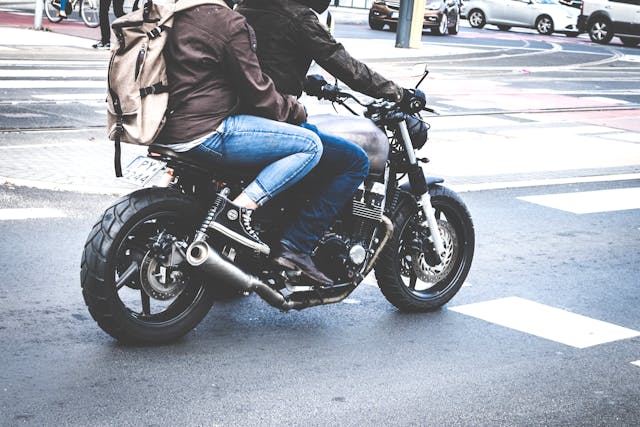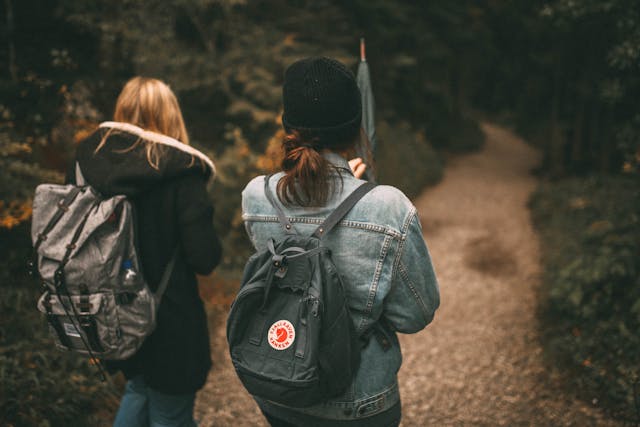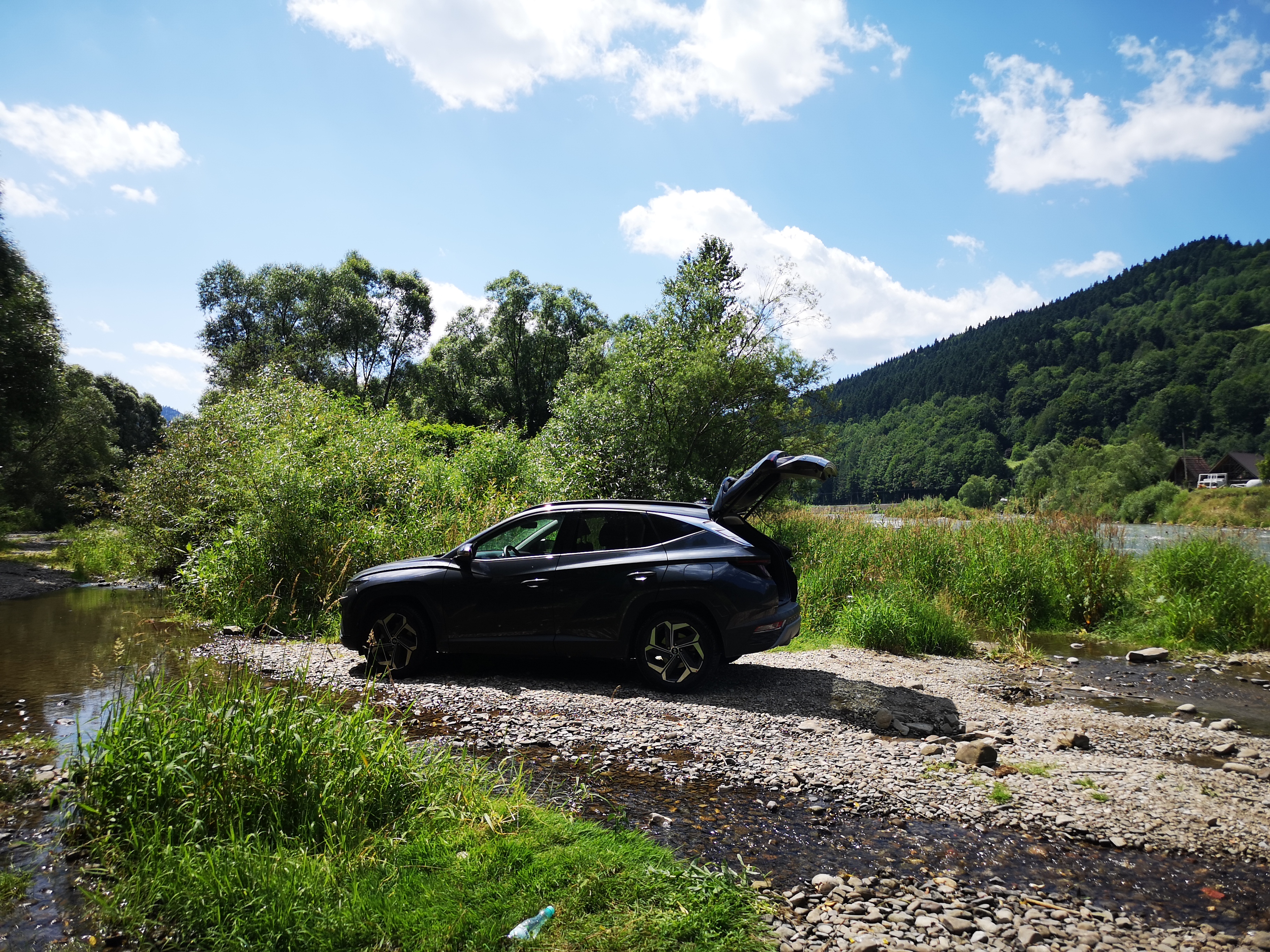Evacuation Backpacks: From EDC to INCH
Sometimes we think of backpacks as simple storage for our stuff. But in emergency situations, a backpack can become your best friend.
From a light, everyday EDC, through a 24-hour bag, three-day pack, all the way to the beast - INCH.
Each has a different philosophy, purpose, and weight, but each can be a lifeline when the unexpected happens.
EDC - Everyday Carry

This is the simplest bag, sometimes not even a backpack, just a small pouch or pocket.
Its goal is simple: get you home the same day or to another safe place.
Minimalism is key. Phone, keys, wallet, knife or multitool, maybe a fire starter if you like sitting by a fire after work - usually that’s enough.
Some carry a full kit; others stick to the bare minimum.
But remember: don’t overload yourself. First gather what you actually need, then pick a bag so everything fits comfortably with some room to spare.
In an EDC bag, you’re really fighting for basic safety and mobility:
Self-defense tools - not always needed, but being unprotected in a chaotic situation can be dangerous.
Basic first aid kit - adjust the contents according to your skills. The equipment recommended by the Polish Red Cross (PCK) is described here: FAK: Build the ultimate Car First Aid Kit (Before You Need It).
Everyday essentials - documents, cash, credit card, flashlight, whistle - small things that become invaluable in a crisis.
Light, discreet, ready every day - this is your bag, even if it’s more of an EDC pocket.
24-Hour - Overnight Bag

Here the philosophy gets more serious. A 24-hour bag is designed to help you survive a night away from home. It includes more than just a few items:
- First aid kit
- Necessary medications (diabetes, asthma, hypertension - critical in life-or-death situations)
- Shelter - poncho, tarp, bivvy, or lightweight tent. Without cover in rain or cold, hypothermia sets in fast.
- Change of clothes - socks, underwear, t-shirts, base layers - wet clothing accelerates heat loss.
- Fire sources - lighters, ferro rod - no heat or light means hypothermia and no way to cook.
- Hydration and food - water filter, purification tablets, lightweight food. Without water, survival beyond 2-3 days is at risk.
- Additional gear - multitool, flashlight, whistle, documents, cash - all help survival and orientation. Combine your EDC with your BOB if needed.
It’s almost like a backpack for a mountain hike, except here every gadget matters - and you’ll use them far more often than during a carefree trek. On a good day, a chocolate bar and a water filter might have sufficed… which often goes unused by the daredevils who drink straight from mountain springs and streams - without checking if a flock of sheep isn’t grazing just upstream.
This isn’t yet a heavy survival bag - it’s a mobile pack to last about a day and reach a safe location. Perfect for sudden evacuation or a short adventure.
It’s also handy for vacations as part of your carry-on.
For more on the BOB composition, check out my BOB breakdown: essentials you can’t afford to forget.
Each item can be packed in a colored pouch, bag, or bundle, or marked with a colored paracord zipper pull.
First aid, clothing, food, and fire sources can each have a color, making it faster to find what you need under stress and in the dark.
Read more about color-coding your gear in the article: From Chaos to Clarity: how color can save you in emergencies.
Three-Day Pack - Serious Evacuation

- Better shelter - a 3x3m tarp, bigger and sturdier than the poncho-tarp in a 24h BOB.
- More clothing - appropriate layers for weather and seasons, including head and hand coverings.
- Expanded water filtration system and larger water supply.
- Stove, more fire sources, tinder - in case natural kindling runs out, dehydrated meals and food rations for several days.
- Larger first aid kit, more medications, hygiene items - poor hygiene increases infection risk during prolonged evacuation.
- Repair and navigation tools - solid multitool, stronger flashlight, working compass, extra paracord.
This isn’t for recreation - it’s about moving safely from a dangerous zone to a place with resources for further survival.
Because it’s heavier, store it near your exit or in a car, and choose a model that sits well on your back, preferably with a hip belt.
Week-Long INCH - “I’m Never Coming Home (Again)” Bag

This is a real beast of a pack. The weekly INCH backpack (80-100 liters) is designed to help you survive a week or more without outside assistance. I recommend keeping it in the car rather than carrying it on your back.
- Comprehensive first aid and medication kit.
- Full clothing and footwear for all weather conditions.
- Larger water and food supplies, cooking gear, fire sources, tinder.
- Tools for repair, lighting, and navigation - flashlights, power bank, multitool, paracord, compass.
- Personal documents, cash, essential items - helping survival and functioning after the crisis.
Not a bag for everyday evacuation - preparation for extreme situations, floods, or war scenarios.
How I Approach It
I don’t have a single EDC bag - I have three levels:
- Phone and keys - minimum essentials: bandage, cash, stored cards, and my trusty Victorinox Classic SD Alox. Perfect for quick trips to the store or post office.
- Slim city wallet - a few bandages, credit card, cleaning cloth, some cash. Ideal for business meetings or work, light and discreet.
- Field wallet - fuller kit: bandages, cash, credit card, small multitool, flashlight, lighter. Useful for winter walks or longer city strolls when it gets dark.
Each level represents a different philosophy and readiness.
Depending on the situation, I grab the appropriate pack - enough to cover my needs without carrying unnecessary weight.
Of course, in serious danger, like a fire in the building, I consolidate everything into my BOB before leaving - all in one place, ready for immediate evacuation.
The truth is, I rarely spend just one night away - more often, two or three nights in a row.
So I never built a separate “24h” bag in the strict sense. Instead, my three-day setup doubles as a one-day bag: I only take what’s needed.
I use a 55 L waterproof vinyl duffel from HH - light, simple, resistant to water and sand.
Not perfect for long treks - the lack of a hip belt shows with heavier loads - but fine for short-distance moves.
I used to carry a ZipperFox 40 in MultiCam - solid, but in wartime, I don’t want to look like a target.
Camouflage works in the woods (though during mushroom picking, an orange vest is better so you’re not mistaken for a wild boar), but in the city, it draws unwanted attention.
So I switched to a simpler, less “military” look, making my three-day pack my universal BOB - ready for three nights in the field or just one if needed.
For longer trips, around two weeks, I keep supplies in my BOV - the car, my mobile warehouse.
In a crisis, I leave the apartment with EDC in my pocket and head toward the BOV with the BOB.
If the car is inaccessible, my three-day pack stays on my back - a complete set of clothes, food, and gear to reach a safe location without stress.
Summary
Every backpack represents a different philosophy.
- Daily EDC ensures safety and mobility in the short term.
- A 24-hour BOB allows you to survive the night and reach a safe place.
- A three-day BOB enables evacuation from a dangerous area with basic comfort and security.
- INCH prepares you for a week or more in extreme conditions when help might not arrive immediately.
It’s worth exploring these options and packing your backpack at least once - sometimes even an old bag in the closet, if in good condition, can become your most valuable companion in an unexpected situation.
Evacuation backpacks are not tools of fear or influencer trends - they are a way to be prepared, maintain comfort, and keep peace of mind when life throws surprises.
When the dust settles and the adrenaline finally fades, only one thing remains: you and your mind. It makes the decisions before you even reach for any gear.
It’s not the amount of equipment that matters, but how quickly you can think and make the right decisions.
Gear helps - but your brain leads the survival operation.
And remember: lone wolves fall fastest. Even in tough conditions, it’s worth sticking together - in a group, it’s not only safer, but… warmer.
Working together, supporting each other, and staying alert often determine success, while also adding a touch of calm and confidence in every unexpected moment.